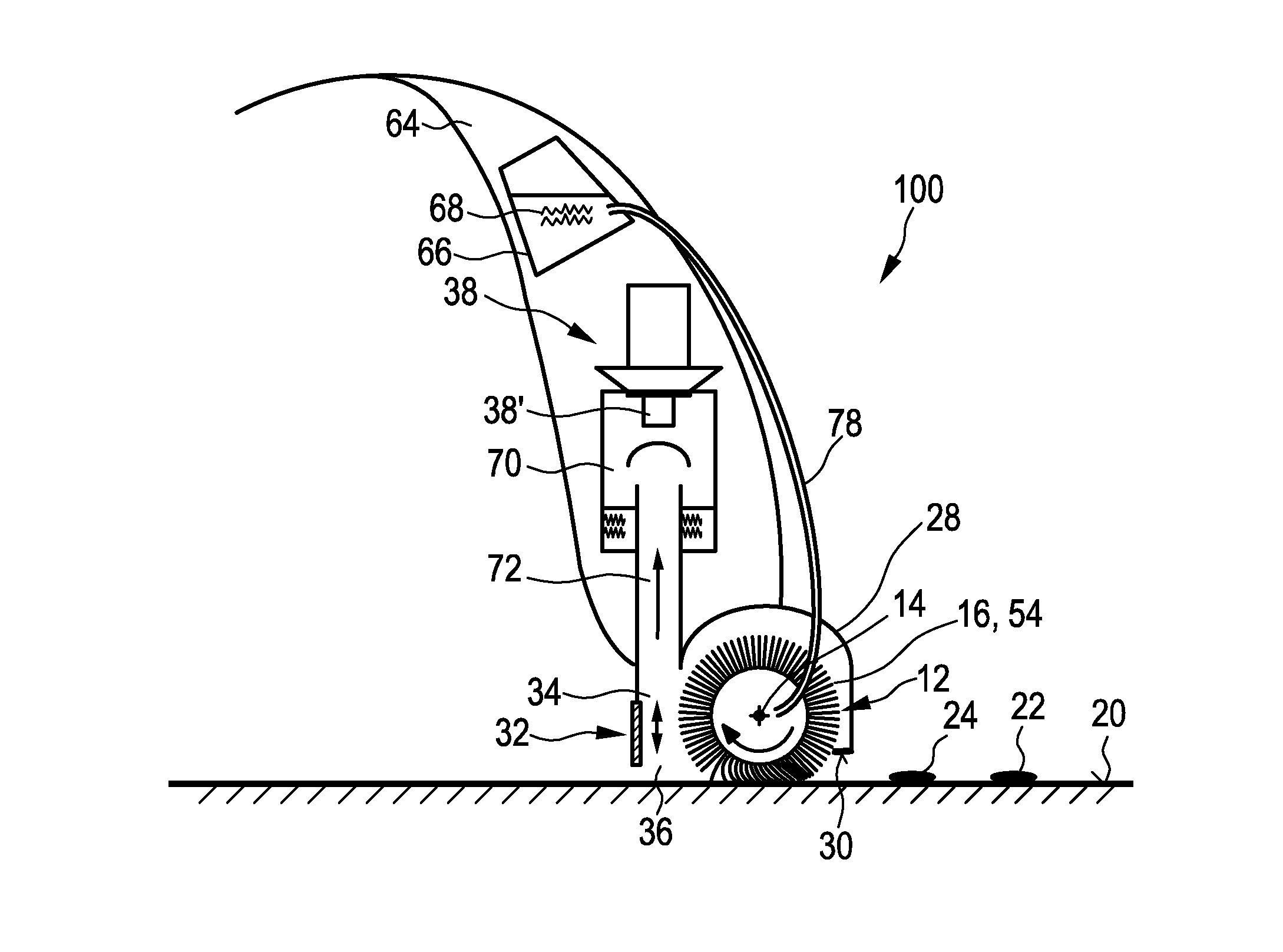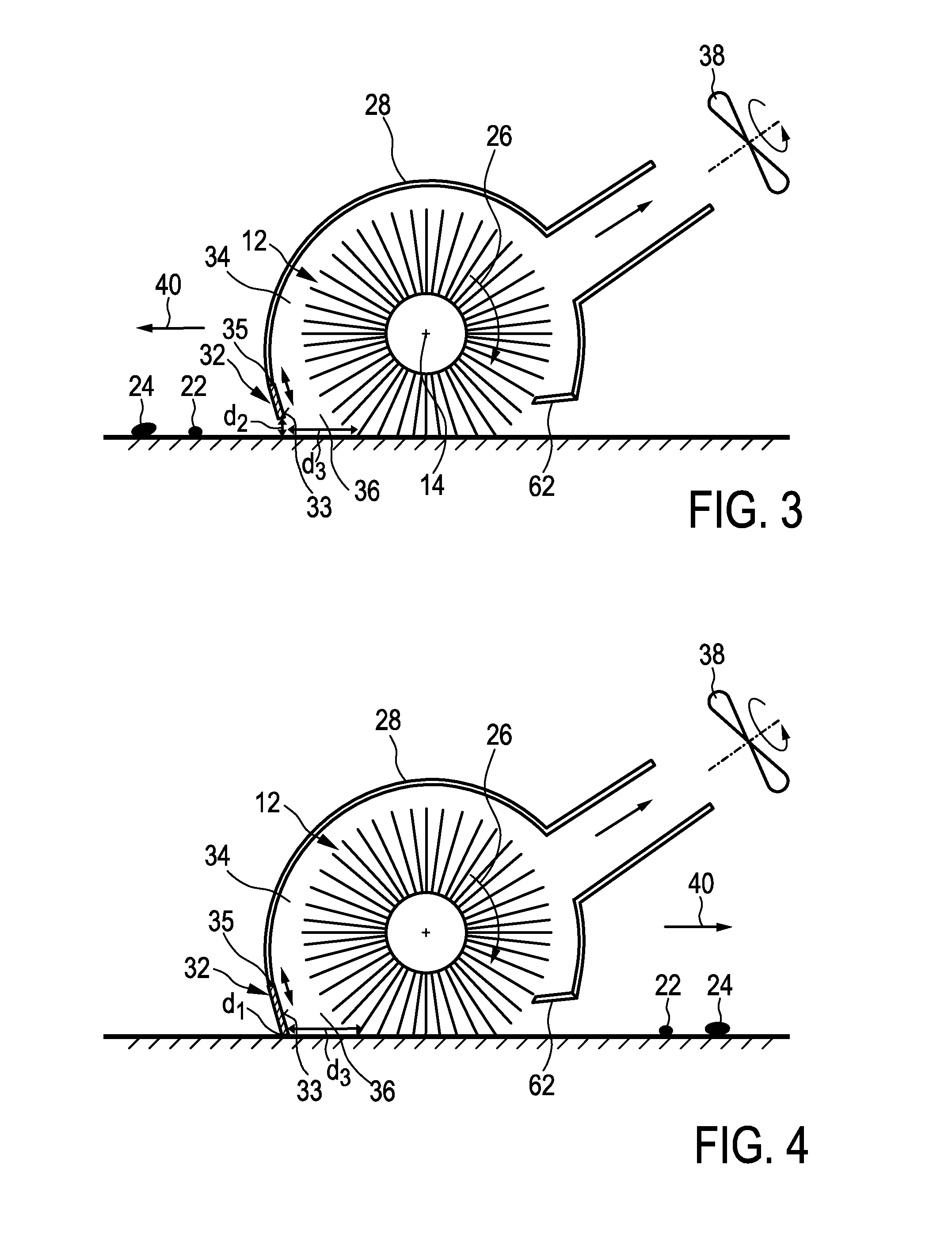Floor nozzle for vacuum cleaner
a vacuum cleaner and nozzle technology, applied in the field of cleaning devices, can solve the problems of high consumer price of the device, limited work capacity, and inability to meet the needs of cleaning equipment, and achieve the effects of enhancing the speed of liquid removal, high acceleration, and increasing the centrifugal acceleration at the top portions of the brush elemen
- Summary
- Abstract
- Description
- Claims
- Application Information
AI Technical Summary
Benefits of technology
Problems solved by technology
Method used
Image
Examples
first embodiment
[0085]FIGS. 1 and 2 show a schematic cross-section of a nozzle arrangement 10 of a cleaning device 100 according to the present invention. In FIG. 1 the nozzle arrangement 10 is shown in a first working position, whereas in FIG. 2 the nozzle arrangement 10 is shown in a second working position. The nozzle arrangement 10 comprises a brush 12 that is rotatable about a brush axis 14. Said brush 12 is provided with flexible brush elements 16 which are preferably realized by thin microfiber hairs. The flexible brush elements 16 comprise tip portions 18 which are adapted to contact a surface to be cleaned 20 during the rotation of the brush 12 and to pick-up dirt particles 22 and / or liquid 24 from said surface 20 during a pick-up period when the brush elements 16 contact the surface 20.
[0086]A linear mass density of a majority of the brush elements 16 is, at least at their tip portions 18, preferably chosen to be lower than 150 g / 10 km. Further, the nozzle arrangement 10 comprises a drive...
second embodiment
[0107]As shown in FIGS. 3 and 4 illustrating the present invention an additional vacuum aggregate 38 may be provided, which is in these figures only shown in a schematic way. The vacuum aggregate generates an under-pressure in the suction area 34 for ingesting dirt particles 22 and liquid 24 that have been encountered and collected by the brush 12 and the bouncing element 32. It is to be noted that said vacuum aggregate 38 is not necessarily needed. However, an additionally applied under-pressure may further improve the cleaning performance of the device 100. Especially particles 22 that are re-sprayed from the brush 12 to the surface 20 and to not bounce against the bouncing element 33 may in this case also be ingested.
[0108]The under-pressure that is generated by the vacuum aggregate 38 within the suction area 34 preferably ranges between 3 and 70 mbar, more preferably between 4 and 50 mbar, most preferably between 5 and 30 mbar. This under-pressure is, compared to regular vacuum ...
PUM
 Login to View More
Login to View More Abstract
Description
Claims
Application Information
 Login to View More
Login to View More - R&D
- Intellectual Property
- Life Sciences
- Materials
- Tech Scout
- Unparalleled Data Quality
- Higher Quality Content
- 60% Fewer Hallucinations
Browse by: Latest US Patents, China's latest patents, Technical Efficacy Thesaurus, Application Domain, Technology Topic, Popular Technical Reports.
© 2025 PatSnap. All rights reserved.Legal|Privacy policy|Modern Slavery Act Transparency Statement|Sitemap|About US| Contact US: help@patsnap.com



